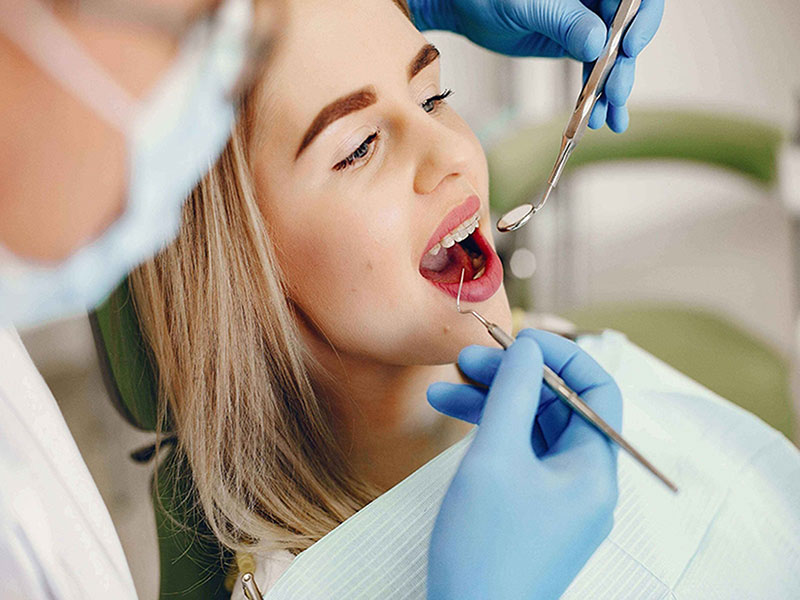Factors Affecting Dental Infections in Children After Crowns
Dental infections in children after crown placement can result from several factors. One of the most significant factors is poor oral hygiene. If the child doesn’t brush properly or use dental floss after the crown placement, food debris and bacteria can accumulate around the tooth, leading to an infection. This is especially true for back teeth, which are harder to access.
In addition to oral hygiene, the type and quality of the crown can influence the likelihood of infection. If the crown is not placed properly or is made from low-quality materials, it may create gaps that bacteria can infiltrate. Furthermore, if the crown does not make full contact with the natural tooth, a gap may form, which can be a breeding ground for infection.
Systemic factors can also play a role in the development of dental infections. For example, children with chronic illnesses or weakened immune systems may be more prone to dental infections. Also, the use of certain medications that suppress the immune system can increase the risk of infection. Therefore, considering the child’s overall health condition and consulting with a dentist before crown placement is crucial.
Methods for Treating Dental Infections in Children After Crowns
The treatment of dental infections in children after crown placement depends on the severity of the infection and the child’s general health condition. One common initial method is the prescription of antibiotics. These medications can help reduce the infection and inflammation, allowing for faster healing. The dentist may prescribe a specific antibiotic depending on the type of bacteria causing the infection.
In more severe cases, additional dental treatments may be necessary. For example, if the infection has reached the pulp of the tooth, a root canal may be required. In this procedure, the dentist removes the infected tissue from inside the tooth and fills it. This method can help preserve the tooth and prevent future infections.
In some cases, if the infection has caused significant damage to the tooth, extraction may be necessary. This decision is usually considered a last resort, and the dentist will make this choice after thoroughly evaluating the tooth and infection. After extraction, the dentist may suggest replacement options, such as implants or prosthetics.
Providing all specialized dental services, including implants, orthodontics, cosmetic dentistry, surgery, and specialized treatments for children at Dr. Damghanipour’s specialized dental clinic.

Prevention of Dental Infections in Children After Crown Placement
Preventing dental infections in children after crown placement largely depends on maintaining good oral hygiene. Parents should teach their children how to brush properly and use dental floss. Brushing at least twice a day and flossing at least once a day can help reduce bacteria and food debris. Additionally, using antiseptic mouthwashes can further improve oral hygiene.
In addition to oral hygiene, proper nutrition plays an important role in preventing infections. Consuming sugary and sticky foods can increase bacteria in the mouth. Therefore, parents should try to limit the intake of sweets and harmful snacks, and instead, add fresh fruits and vegetables to the child’s diet. Drinking enough water can also help rinse the mouth and reduce bacteria.
Finally, regular visits to the dentist for check-ups and cleanings are crucial. The dentist can help identify potential problems before they turn into infections and provide necessary treatments if needed. These check-ups can help parents and children ensure the health of their teeth and prevent serious infections from developing.
In conclusion, dental infections in children after crown placement depend on various factors such as oral hygiene, the quality of the crown, and the child’s overall health. Paying attention to maintaining good oral hygiene, proper nutrition, and regular visits to the dentist can have a significant impact on preventing infections. Parents play an important role in preserving their children’s dental health by teaching proper brushing techniques and encouraging healthy hygiene habits. Maintaining the health of children’s teeth not only improves their quality of life but also prevents serious future problems. Remember, timely intervention and efforts to prevent issues can make a big difference in the dental health of children.
What symptoms does a dental infection have after a crown in children?
Signs of a dental infection may include severe pain, swelling around the tooth, red or black spots on the gums, and sometimes fever. If your child shows these symptoms, be sure to visit a dentist promptly.
How can one prevent tooth infection after a crown?
To prevent infection, maintaining oral hygiene is essential. Regular brushing, using dental floss, and visiting the dentist for routine check-ups can be highly beneficial.
In the case of an infection, what is the appropriate treatment?
If an infection is diagnosed, the dentist may prescribe antibiotics, and in some cases, corrective treatments or even a root canal may be needed to restore the tooth to its normal condition.
Can a dental infection after a crown have serious consequences?
Yes, if an infection is not treated promptly, it can lead to more serious complications, including the spread of the infection to other teeth or even damage to the jawbone.
Why do dental infections occur more frequently in children?
Children’s immune systems are not fully developed, which is why they may be more susceptible to dental infections. Additionally, poor hygiene habits, such as irregular brushing, can increase the risk of infection.
